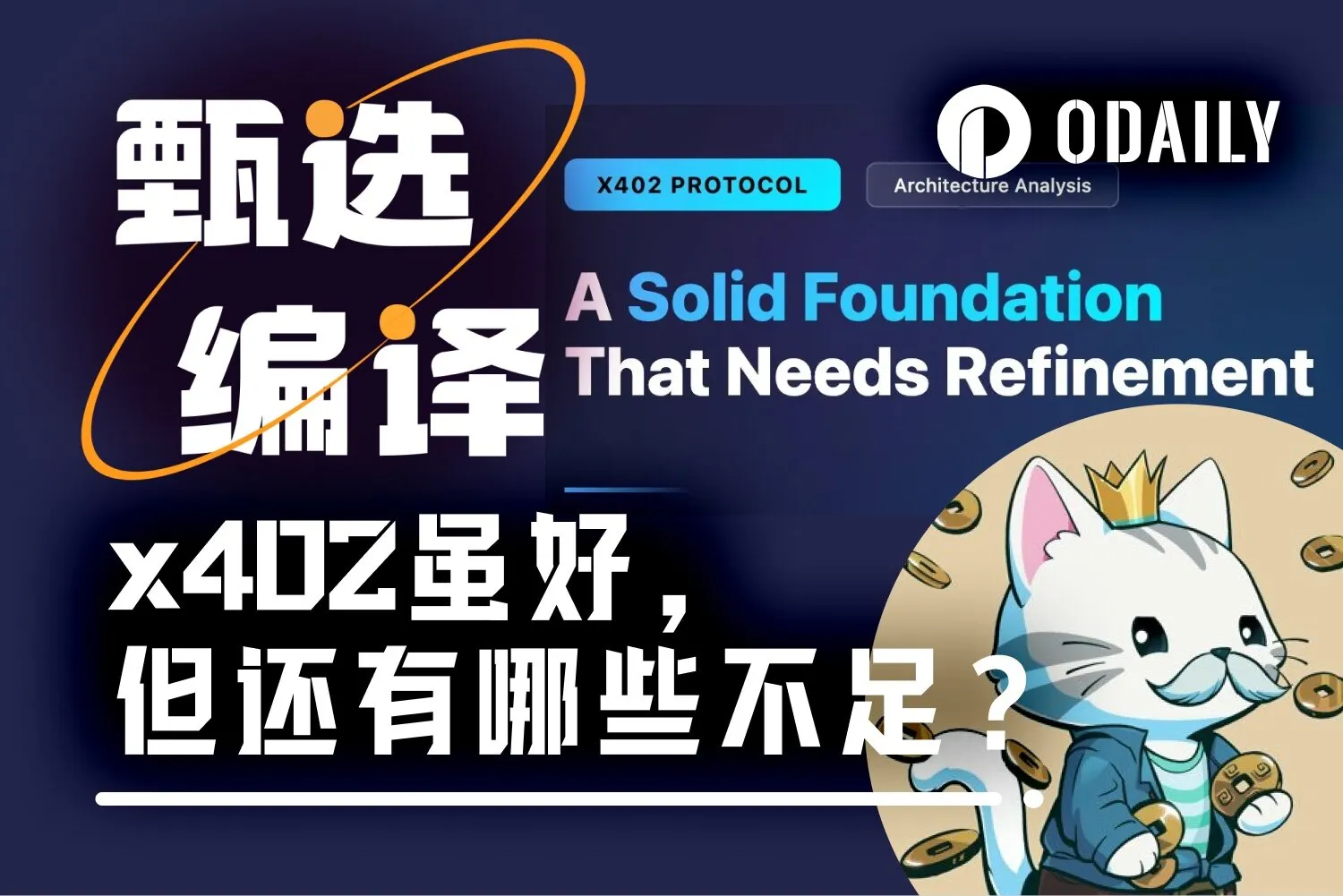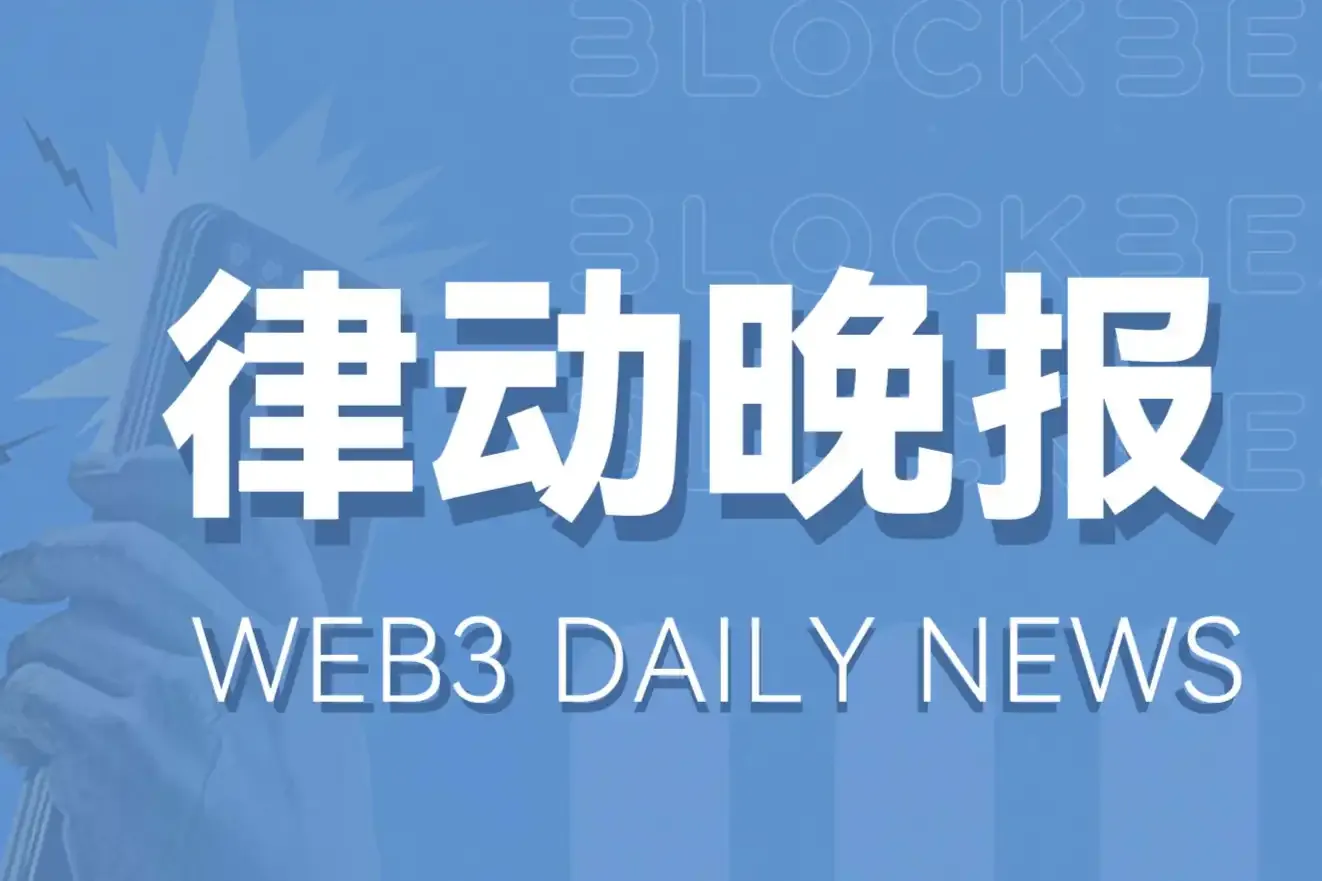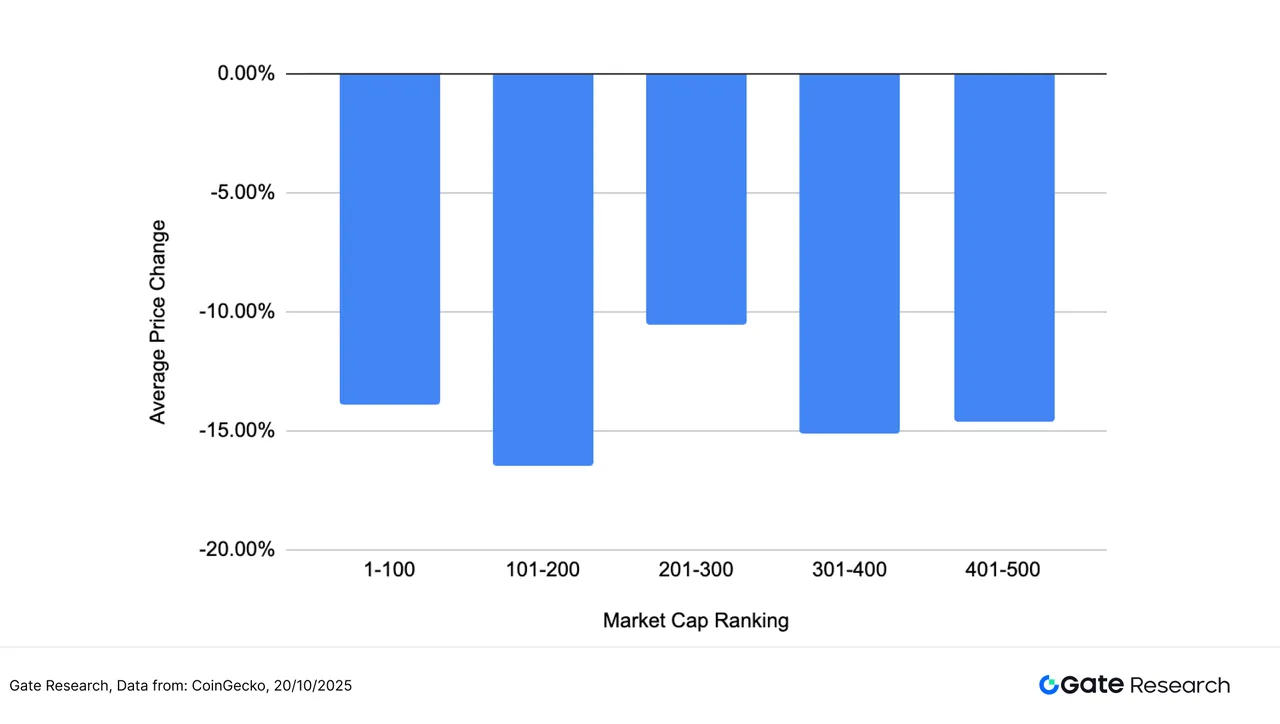Two days ago, the Norwegian humanoid robot company 1X Technologies officially launched the NEO robot and opened pre-orders, priced at $20,000, with a monthly subscription model available ($499 per month). Deliveries are expected to begin in 2026. Tesla has also stated that robots are the next major profit point. It seems quite likely that robots will be the next mainline.
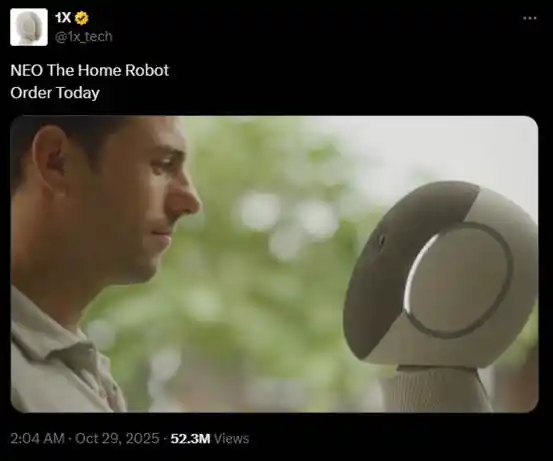
Humanoid robots capable of performing household tasks such as taking out the trash, folding clothes, handing over items, and organizing tableware are products that many of us imagined in our childhood essays, and now they are about to become a reality. Such news is undoubtedly the focus of attention for many. In the crypto space, the meme coin $NEO on Solana once surpassed a market value of $4 million and currently maintains a market value of $2.7 million.

Additionally, the on-chain financing platform Echo, created by Cobie and recently acquired by Coinbase for $375 million, has a $10 million C round financing quota for 1X Technologies. However, specific details are unknown as it was conducted in a private group.
Apart from meme coins and Echo's financing quota, robot-related projects in the crypto space have also attracted attention, with many players referring to this sector as "Robotics." This article will organize projects related to the Robotics sector.
OpenMind
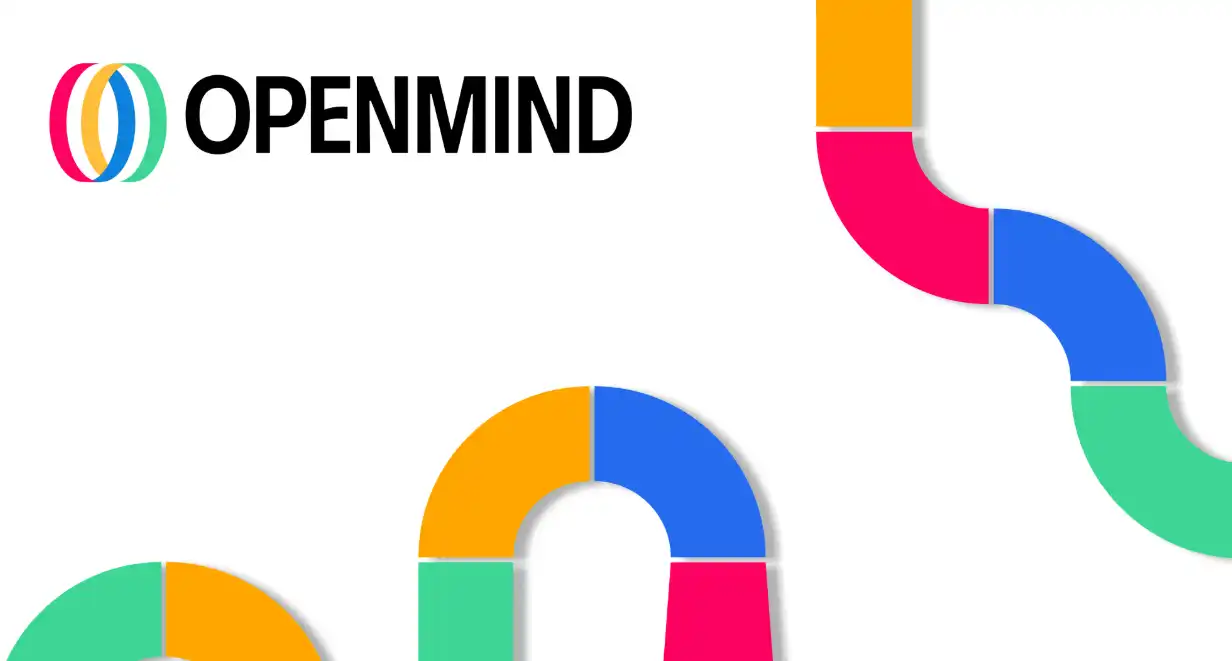
On August 4, according to official news, OpenMind, a smart machine infrastructure company based in Silicon Valley, announced the completion of a $20 million financing round led by Pantera Capital, with participation from Ribbit, Sequoia China, Coinbase Ventures, DCG, Lightspeed Faction, Anagram, Pi Network Ventures, Topology, Primitive Ventures, and Amber Group, among others.
OpenMind helps robots think, learn, and work by developing open-source software. The native open-source AI robot operating system OM1 allows for the configuration and deployment of AI Agents in both the digital and physical worlds. Users can create an AI character that runs in the cloud or operates on a physical robot in the real world.
In simple terms, OpenMind's OM1 is like creating an "AI brain" for robots. This "AI brain" can be collaboratively operated by multiple AI Agents, interact with various LLMs, and gather data from multiple sources to perform tasks (such as helping users post on social media). Since OM1 is open-source, it is a highly adaptable robot operating system, similar to how the Android system is hardware-agnostic for smartphones.
Additionally, OpenMind has an on-chain robot identity network called FABRIC, designed to share a verifiable trust layer between humans and robots. Humans can earn badges by sharing location data on maps, assessing robot behavior, and developing, while every robot equipped with the OM1 system will join the FABRIC network, gaining a unique verifiable identity and enabling the tracking of commands, operation logs, ownership, and other related actions on-chain.
OpenMind has not issued a token yet.
XMAQUINA
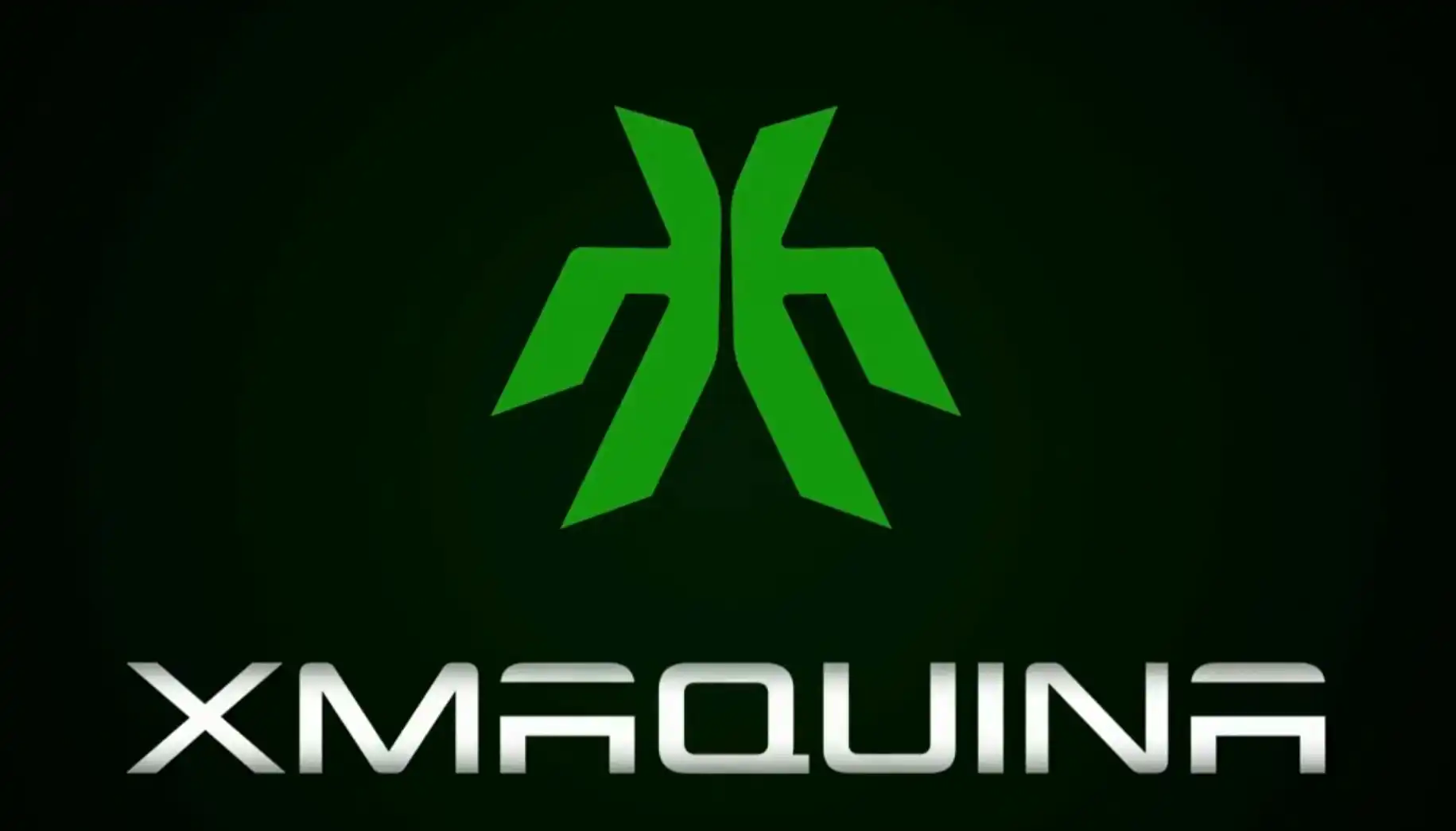
A robot investment DAO. Its governance token $DEUS has completed three rounds of sales, raising over $5.5 million in crypto assets. Currently, the DAO has begun using the auction proceeds to support three companies in the humanoid robot field: Apptronik, Figure AI, and Agility Robotics. A screenshot from the DAO's treasury on the official website shows that the investments have started to yield profits, with some individual returns exceeding 100%.
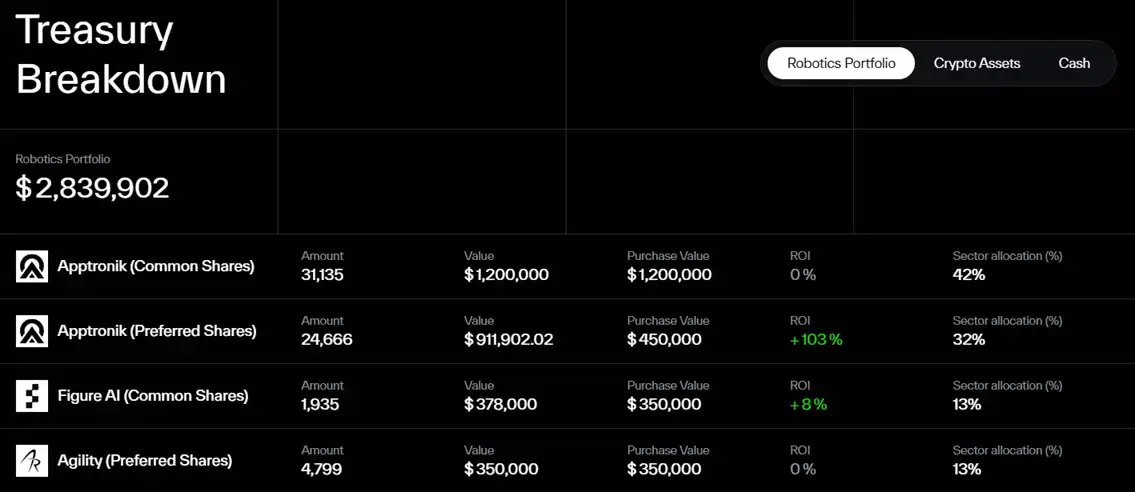
However, $DEUS has not yet undergone TGE. At TGE, 33% of the $DEUS sold to the community will be immediately unlocked, with the remaining 67% unlocking linearly over 12 months.
peaq
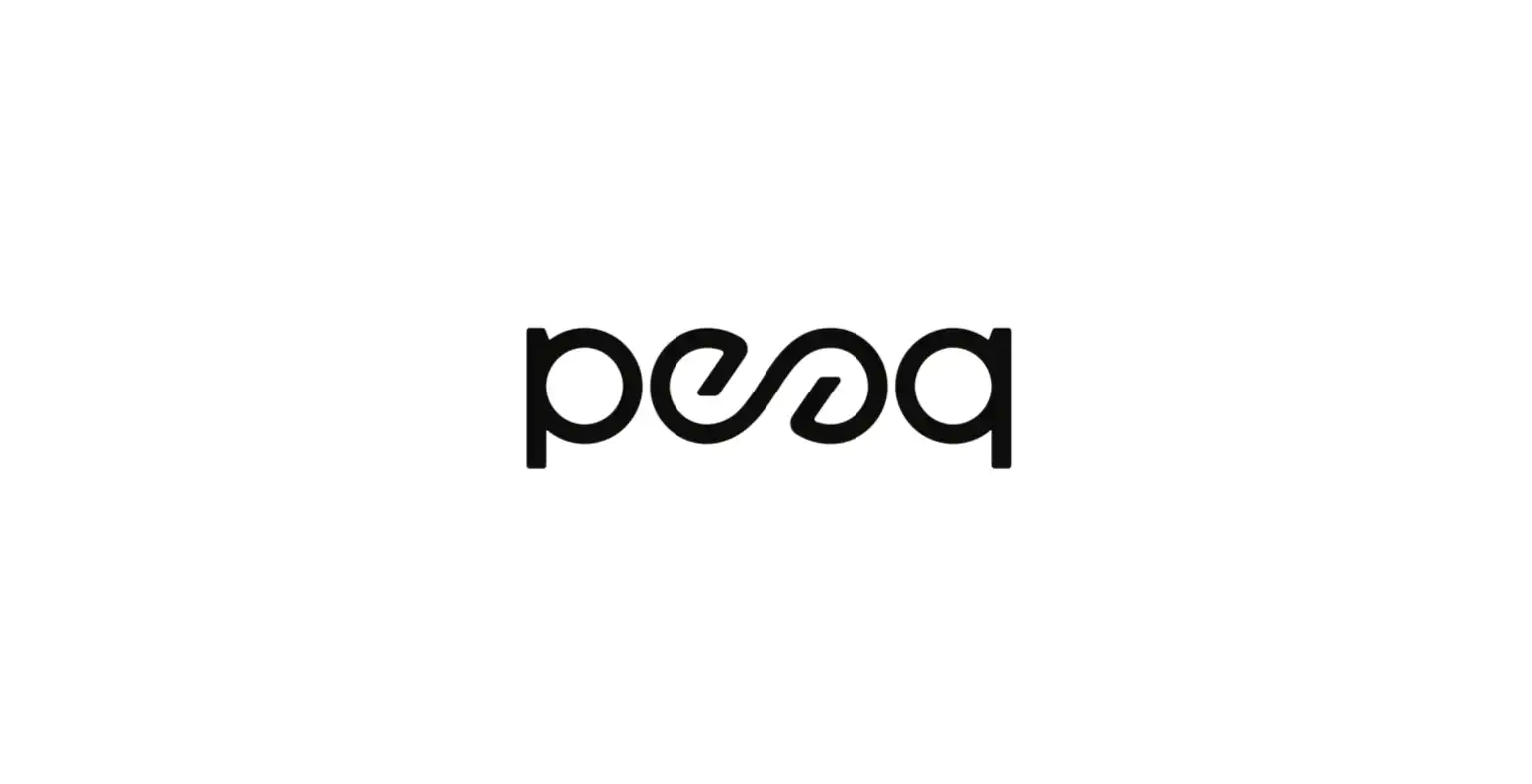
On March 27, the DePIN Layer1 protocol Peaq completed a $15 million financing round, led by Generative Ventures and Borderless Capital, with participation from Spartan Group, HV Capital, CMCC Global, Animoca Brands, Moonrock Capital, Fundamental Labs, TRGC, DWF Labs, Crit Ventures, Cogitent Ventures, NGC Ventures, Agnostic Fund, and Altana Wealth.
Although the initial narrative focused on DePIN, the project has been quick to sniff out market trends, recently following up on the hot x402 project. In terms of robotics, peaq released a Robotics SDK in September this year, enabling robots to obtain autonomous identity, make payments and receive funds, verify data, and connect to the on-chain network economy.
Additionally, peaq has a machine RWA market that tokenizes machines on-chain as shared revenue-generating assets. Peaq launched its first tokenized, robot-operated farm on the main stage of the Korea Blockchain Week in 2025, which has been deployed on the peaq chain and will distribute operational profits to token holders.
Currently, the circulating market value of $peaq is approximately $110 million.
PrismaX
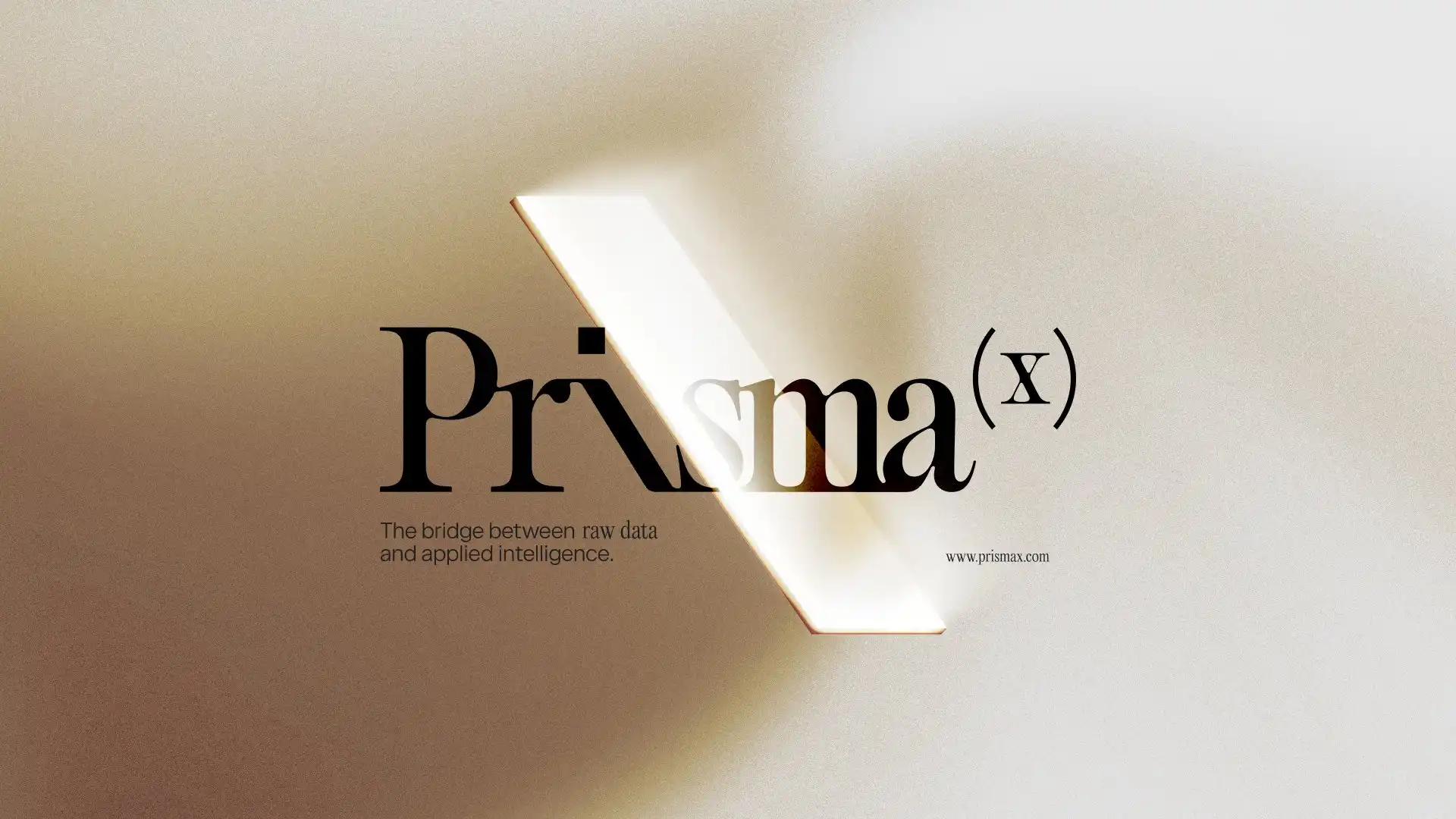
On June 17, PrismaX announced the completion of a $11 million financing round, with investors including a16z CSX, Volt Capital, Blockchain Builders Fund, Stanford Blockchain Accelerator, and Virtuals.
PrismaX is building an open coordination layer that connects remote operators, robot users, and robot companies. Operators can connect with users, remotely control robots to complete real tasks, and collect valuable data. They can also request practical services such as logistics and advertising.
PrismaX features a protocol for remote-operated robots, allowing businesses to find capable and experienced robot operators for complex tasks. Operators can choose to stake network tokens to enhance their trustworthiness and increase their chances of receiving high-reward tasks. The rewards for stakers are related not only to the amount staked but also to the quality of their work, and they will receive additional rewards as work efficiency improves.
The data accumulated from remote operations will be used to train robots to enhance their autonomy, which in turn will improve the efficiency of remote operators, ultimately achieving a high or even complete autonomy for robots.
PrismaX has not issued a token yet.
CodecFlow

CodecFlow provides a unified platform that runs seamlessly on cloud, edge, desktop, and robot hardware, supporting current popular APIs and traditional systems.
AI-driven operators respond to changes in the UI of software or the robot environment through perception and real-time reasoning, addressing the vulnerabilities of traditional robotic automation processes that overly rely on pre-written scripts, even in the face of slight changes.
In short, it captures screenshots, camera feeds, or sensor data, then processes these external input data with AI to handle observations or instructions, ultimately executing decisions through user interface interactions.
Currently, the market value of the token $CODEC is approximately $16 million.
NRN Agents
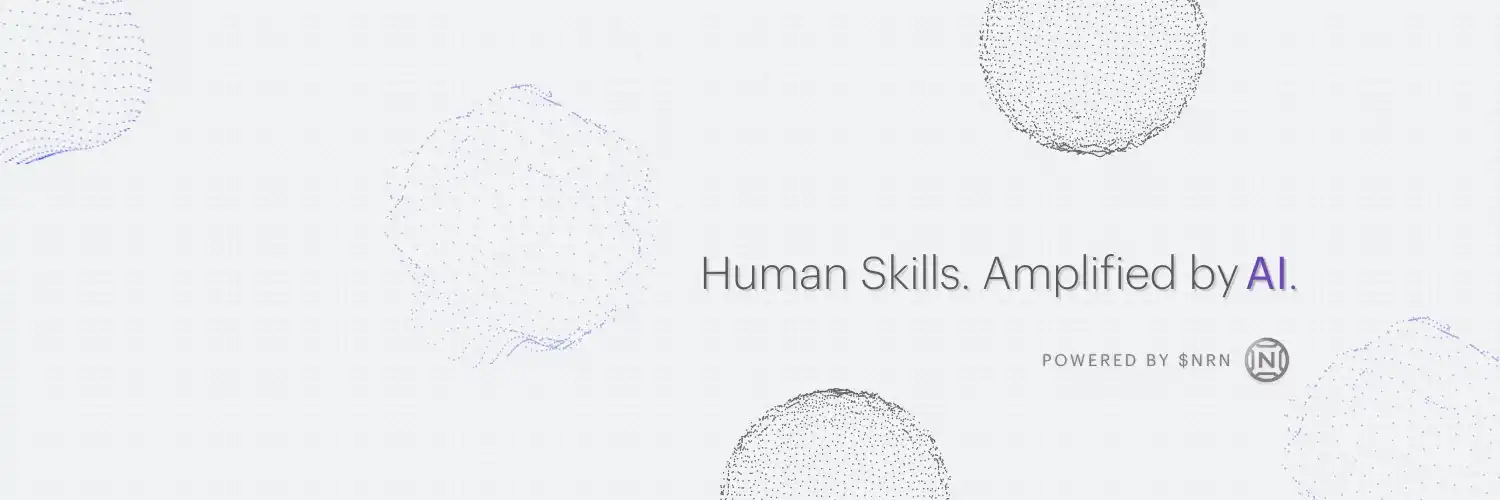
NRN has evolved from the AI Agent battle real-time training chain game AI Arena. On October 28, 2021, developer ArenaX Labs announced the completion of a $5 million seed round financing, led by Paradigm Capital, with participation from Framework Venture Partners. On January 9, 2024, ArenaX Labs announced the completion of a new financing round of $6 million, led by Framework Ventures, with participation from SevenX Ventures, FunPlus/Xterio, and Moore Strategic Ventures.
While the overall process is still about collecting data -> reinforcing robot learning, NRN leverages its rich experience in the gaming field to provide a browser-based experience, transforming robot data collection into a game where users can intuitively control simulated robots through their browsers. During the game, the behavior data generated by user operations is used to train real-world robot systems.
At the current stage, the project will focus on the robotic arm (RME-1) to validate data collection, real-time learning, and adaptability.
Currently, the token $NRN has a market value of approximately $11.7 million.
Auki
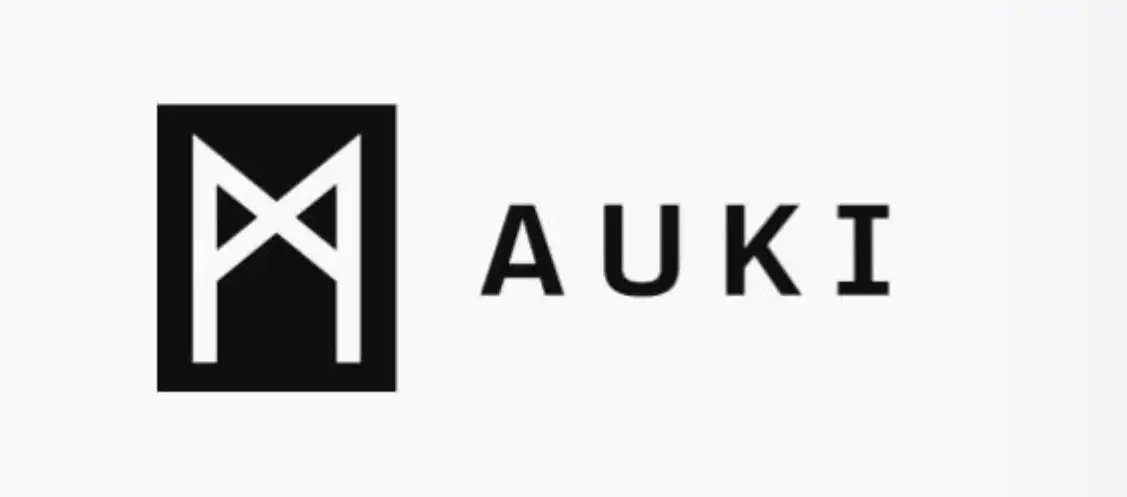
Auki's decentralized machine perception network Posemesh is used to connect humans, devices, and AI. At its core is a DePIN (Decentralized Entity Network) architecture that allows devices such as robots and AR glasses to share location and sensor data in real-time, collaboratively building a spatial understanding of the physical world, providing a shared spatial view for robots, AR, and AI.
Various node roles are designed based on the Posemesh protocol. Computing nodes provide computational power, motion nodes (robot terminals) upload location information and sensor data, reconstruction nodes generate 3D map models based on this data, and domain nodes manage the 3D space. Each node is incentivized with $AUKI tokens based on its contributions, driving a self-evolving machine vision network.
This network emphasizes privacy protection, avoiding a single entity from monitoring users' private spaces, while being applicable in multiple scenarios such as retail (product placement optimization), property management (asset tracking), exhibition navigation, and building renovations.
Currently, the token $AUKI has a market value of approximately $52 million.
RobotStack
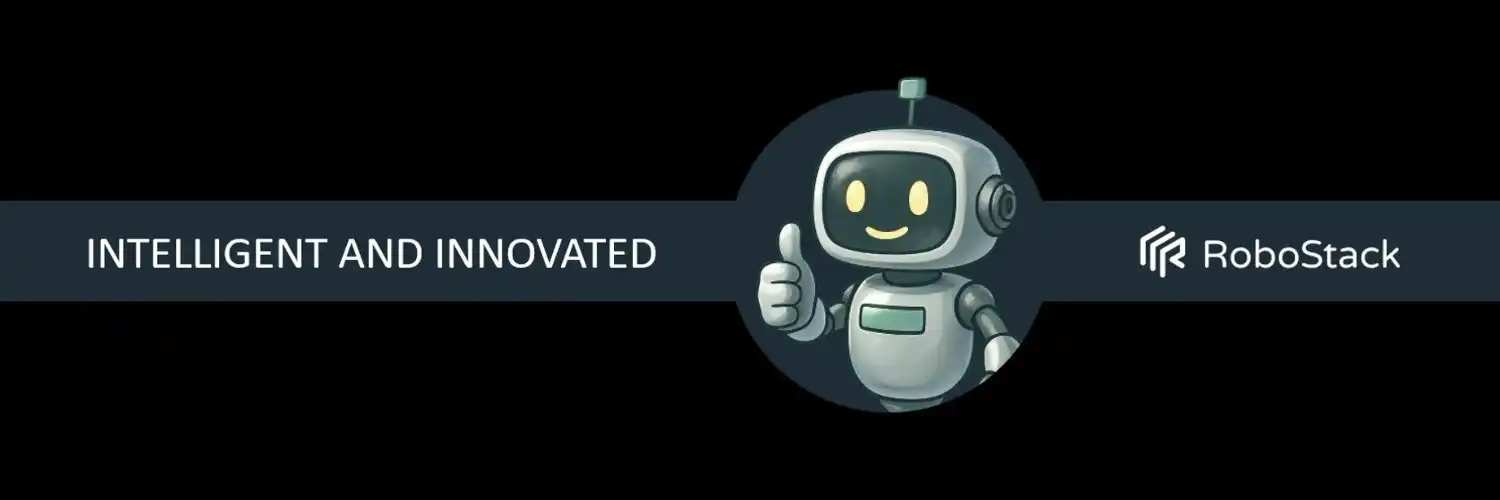
RoboStack is a cloud-based robot development and deployment platform that provides developers with simulation environments and sandbox testing. The official introduction states that the platform can simulate real environments in the cloud, featuring a secure sandbox mechanism, high-performance computing capabilities, real-time metrics, and team collaboration functions.
To address the challenges of integrating and training robotic technologies that are dispersed across different hardware, middleware, and communication standards, RoboStack has proposed the Robot Context Protocol (RCP), which allows secure communication between robots, AI agents, and humans. The simulated environment will include tokenized voting and incentive mechanisms to promote competition among developers and enthusiasts, facilitating the deployment of real robot applications in future multi-chain environments.
Currently, the token $ROBOT has a market value of approximately $3 million.
BitRobot
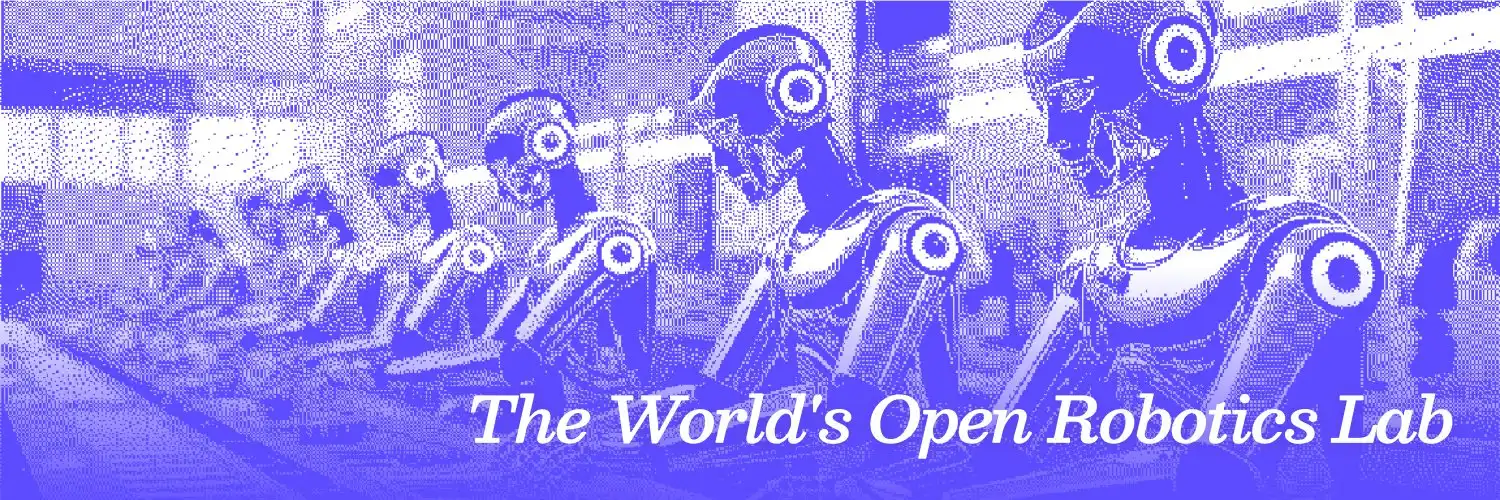
The BitRobot Network is jointly developed by FrodoBots Lab and Protocol Labs, aiming to achieve distributed robotic work and collaboration. Its key components include: Verifiable Robot Work (VRW), a quantifiable metric for defining and validating robotic tasks; Device Node Tokens (ENT), which serve as unique identifiers for robots within the system in NFT form, used for device ownership and network access; and a subnet that acts as the operational layer for task execution (a resource cluster that creates value for the BitRobot network).
On February 14, FrodoBots Lab announced the completion of a $6 million seed round financing, bringing the total financing amount to $8 million.
Currently, BitRobot has not issued a token. It is worth noting that FrodoBots Lab is already selling robots, such as Earth Rovers, which resemble real-life Mario Kart, priced at $249. Players remotely control their sidewalk robots in a global treasure hunt, with data provided for researchers to deploy and test their latest AI navigation models. This also has the potential for token issuance.
Another game robot, ET Fugi, will also be launched in the future, allowing players to remotely control robotic arms to complete various 3D puzzle games and competitions. ET Fugi is also the first subnet of BitRobot.
免责声明:本文章仅代表作者个人观点,不代表本平台的立场和观点。本文章仅供信息分享,不构成对任何人的任何投资建议。用户与作者之间的任何争议,与本平台无关。如网页中刊载的文章或图片涉及侵权,请提供相关的权利证明和身份证明发送邮件到support@aicoin.com,本平台相关工作人员将会进行核查。
